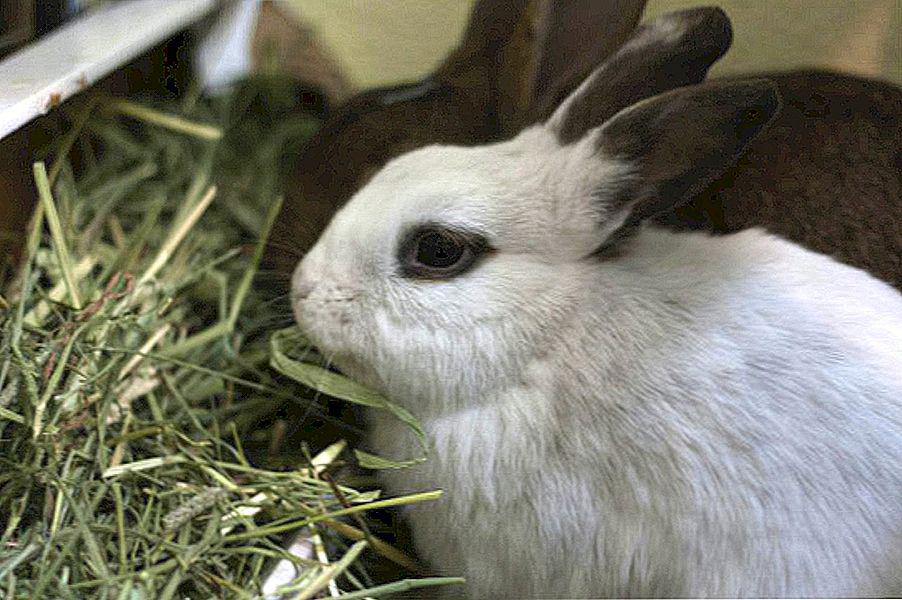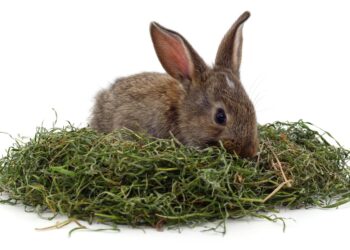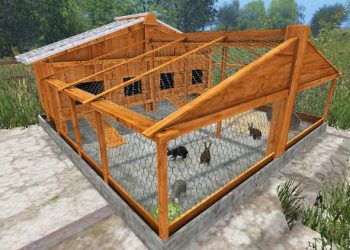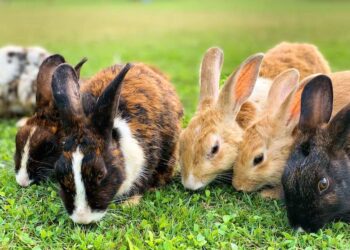You might be thinking of getting a rabbit for your family – and why not? Rabbits are excellent first pets for young children, and relatively easy to look after besides. You’d also be joining a good company, as rabbit ownership doubled in the last year.
But owning a rabbit is still a responsibility, and, amongst other things, getting their diet right is key. Here we’ll talk about the three constituent parts of the average rabbit’s diet, and how they affect a rabbit’s health.
A Note on Rabbit Breeds
There is a large number of different rabbit breeds for the prospective owner to choose from, with the British Rabbit Council recognising more than 50 breeds and more than 500 varieties of rabbit within those breeds.
Reading Suggestion: 500+ Bunny Names For Your Pet Rabbit
A number of popular breeds stand out from the rest; the Dutch rabbit, with its distinctive short hair and two-tone fur pattern, is one of the more popular breeds amongst UK households, while the Dwarf Lop is a firm favourite amongst younger owners due to their floppy ears and diminutive stature.
Despite the vast differences in physical appearance between rabbit breeds, their dietary requirements are essentially the same across the board. The following are the constituent parts of any rabbit’s healthy diet:
Hay
Hay is a staple rabbit food and should make up around 85% of any given rabbit’s diet at home.
Hay has nutritional value, but is also a crucial source of fibre for rabbits, regulating their gut and preventing a common condition known as GI Stasis. Hay is also a tough foodstuff to chew and break down; rabbits’ teeth are constantly growing.

The grinding action of eating hay enables them to wear their teeth down and maintain them at a comfortable and manageable length. The difficulty involved in eating hay also regulates their eating, and provides them with exercise as they hunt around for the right pieces to eat.
Reading Suggestion: Angora Rabbit: History, Origin, Care And Lifespan
Pellets
While hay makes up a significant portion of a rabbit’s diet, pellets or nuggets can bolster that diet and ensure that your rabbit is getting the right nutrition. A rabbit would generally be provided with unlimited hay, and hence expected to regulate their own diet – but not eating enough hay can result in GI Stasis.
Hay or alfalfa pellets can offer that extra insurance for your rabbit’s gut, constituting a low-effort way for them to introduce fibre to their day.
Fresh Vegetables
If Bugs Bunny is to be believed, then carrots are hands-down the rabbit’s favourite foodstuff – and as it happens, Looney Tunes isn’t far wrong! Rabbits love vegetables, especially leafy vegetables like romaine lettuce.
It is important to remember, though, that rabbits benefit from a fibre-rich diet and that too much of a good thing can negatively affect their health. As such, treat vegetables as a little treat, constituting around 5% of your rabbit’s diet. Carrot and fruit should be a weekly treat, while herbs, lettuces (not iceberg) and rockets can be given daily.
Frequently Asked Questions
What do wild rabbits eat?
Can rabbits eat celery?
Can rabbits eat guinea pig food?
Can rabbits eat apples?









